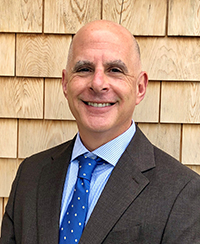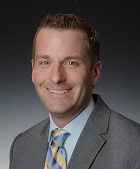PROVINCETOWN — Jonathan Sperber of Truro moved to Cape Cod last spring. On Oct. 7, he filed his new patient paperwork with the Outer Cape Health Services (OCHS) clinic in Wellfleet. But he will not see a clinician until the end of December.
Everyone Sperber spoke with at OCHS warned him it would take time to be assigned a primary care physician. “I was made aware that some physicians have left recently,” he said. “Every time I spoke with them, they told me about delays and the physician shortage.”
Sperber is seeing a nurse practitioner in late December. He was discouraged that it had taken so long to schedule the appointment and that he will not be seeing a physician.
Sperber’s experience is not unusual on the Outer Cape or, for that matter, in many other isolated parts of the U.S., which is experiencing a severe shortage of primary care providers. But OCHS leaders deny that doctors have left the organization recently or that they have had trouble retaining physicians, and they refused outright to answer any questions about the case of Dr. Brian S. Koll or to allow Dr. Koll to be interviewed.
The Doctor Is Out
On Oct. 17, just 10 days after Sperber filed his new patient paperwork, OCHS announced several new hires, including Dr. Koll, an internal medicine specialist with degrees from Brown University and George Washington University School of Medicine. A press release stated that Koll would act as medical director for quality, “serving as the primary clinician champion for quality improvement and safety across all OCHS departments.” The document also stated that “[Koll] is accepting adult patients in Provincetown.”

Currently, however, no mention of a director for quality can be found on the OCHS website. When a reporter called the Provincetown clinic, a receptionist said that Koll “had a change of plans.” The receptionist said she did not know where Dr. Koll was and that he is currently working on a part-time, per-diem basis and not taking new patients. She also said that he has stepped down from his role as medical director for quality.
Koll said he would speak to a reporter only with clearance from OCHS. CEO Patricia Nadle said via email that “we do not believe that it is appropriate for Dr. Koll to be interviewed.”
Chief Medical Officer Andrew Jorgensen said that OCHS is accepting new patients at all three clinics in Wellfleet, Provincetown, and Harwich Port. Jorgensen disputed Sperber’s report that physicians have recently been leaving OCHS. “The last primary care physician that left OCHS was two years ago and was at retirement age,” he said. “We really want to correct that misconception.”
OCHS declined further requests for comment. Senior development and communications officer Gerry Desautels refused to provide a list of physicians covering the past several years and their dates of employment.
OCHS opened its new Harwich Port clinic in December 2018. Nadle said that clinicians have seen about 1,800 new patients there since the clinic opened.
“It’s challenging to keep up with that level of [new patient] demand,” Nadle said. “Some of it was driven by loss of long-term providers who had retired or left the community.”
Two nurse practitioners also recently left OCHS due to family reasons, Jorgensen said.
Turnover and Quality of Care
Dr. Brian O’Malley, who served Provincetown for 40 years in his private practice before retiring, confirmed that several physicians have recently left OCHS. “Turnover has always been a serious issue there,” he said. “They turn through doctors constantly.”
O’Malley said that, despite high salaries, physicians have left OCHS because of management practices. “Their model is run by administrators and bureaucrats, not nurses and doctors,” he said. “It’s not a medically driven model — they’re trying to meet metrics.”
After working at OCHS for two years in the late 1970s, O’Malley quit. “Personally, I found it an environment that I couldn’t work in,” he said. “We felt the medical staff had no say in how the place ran.”
Establishing strong rapport with patients is an important element of being a primary care physician, said O’Malley. “When you’ve worked with someone for many years, you have a whole context for them,” he said. “That’s what primary care doctors do — they keep track and get to know people.”
If a new problem develops, a primary care physician already understands her patient’s medical history and can provide better care, he said. Building long-term relationships, therefore, is crucial to primary care, and high physician turnover prevents patients from receiving individually tailored attention.
Sperber has an appointment with a nurse practitioner in December, but he expressed confusion about the difference between a nurse practitioner and a primary care physician.
Jorgensen told the Independent that there is little difference between an experienced nurse practitioner and a primary care physician at OCHS.
“Our primary care doctors and experienced nurse practitioners are providing basically the same care,” he said. Doctors have several years more training than nurse practitioners. Nurse practitioners always work with a larger team of health care providers and know when to send patients to a specialist for extra help, he said.
The Physician Shortage
With major medical centers in Boston and Providence where patients can go for specialty care, OCHS focuses on recruiting primary care doctors.
But there are simply too few physicians entering primary care to provide a large applicant pool. “This problem really starts with the pipeline of candidates coming into primary care,” Jorgensen said. Despite a recent growth in the total number of medical students, “A lot of institutions tend to create more specialists.”

Nadle agreed. “Many of the Boston training programs have a lot of their graduates selecting specialty care — cardiology, neurology, endocrinology,” she said. “There’s only a small number choosing primary care.”
Moreover, physicians may be hesitant to move to the Outer Cape.
A personal connection is usually required to persuade a candidate to accept an offer from OCHS. Jorgensen himself grew to love the Provincetown community as a seasonal resident and eventually decided to move here full-time. “All our physicians have something that really connects them here,” he said.
Not all doctors are willing to work for a federally certified community health center like OCHS, which serves everyone, regardless of insurance coverage or ability to pay. In private practice, doctors have more control over which patients and insurance plans to accept, Nadle said.
Other practices on the Cape, like Primary Care of Cape Cod, are not currently taking new patients and accept only certain types of insurance.
Another issue is finding work for physicians’ spouses. Jorgensen said that some candidates passed over OCHS due to concerns that their partners would not be able to find employment.
Despite these challenges, OCHS has had some recent success in recruiting physicians. Last year Dr. Laura Anthony, who grew up in Barnstable, joined the practice in Harwich Port.
“We’re very fortunate to bring her back to the Cape and serve the community she grew up in,” Jorgensen said.
Working at OCHS also has some perks for physicians, who can receive loan forgiveness from the federal government because OCHS is a federally certified health center.
With a shortage of doctors, getting assigned to a primary care clinician is far from speedy. “Some people want their new patient appointment within weeks, but nowhere is able to do that,” Jorgensen said. “We manage patients’ expectations on how quickly that should happen.” He noted that patients can always visit the urgent care clinic in Provincetown for immediate help.
According to a recent study, doctors in rural areas are aging out of the work force. The number of young physicians (under age 50) in such places dropped by 25 percent from 2000 to 2017. Rural areas can expect a further 23 percent decline in the number of physicians by 2030.
The study suggests yet another strike against rural medicine: with fewer physicians practicing, doctors may be hesitant to take on the resulting larger workload.
At OCHS, most primary care physicians see 1,500 patients a year. If a large percentage of their patients are elderly, doctors see fewer patients — around 1,200, Jorgensen said.



